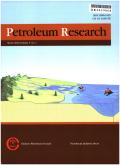Effect of heterogeneity and injection rates on the recovery of oil from conventional sand packs: A simulation approach
Abstract
The study of flow through porous media has been of cardinal gravity in oil and gas applications like enhanced oil recovery (EOR), acidizing, fracturing, etc. One of the most anticipated apprehensions is that the core flooding and simulation have become prevalent to understand the flow through porous media. This study aims at simulating and analyzing the effect of alkaline surfactant flooding through heterogeneous permeability conditions in the lab-scale methods. The conventional methods of core flood deal with the effective permeability of the system without considering the effect of heterogeneity within the core. The heterogeneous studies are conducted by simulating a finely meshed 2-D axisymmetric model of the sand pack. The novel Karanj oil surfactant extracted from Pongamia Pinnata, and partially hydrolyzed polyacryl amide polymer are considered for the physicochemical properties of displacing fluid used in the simulations. Different heterogeneity combinations and displacing fluid injection flow rates are introduced for a single absolute permeability system. Results indicate a trend of oil recovery upright with increasing vertical permeability. A lower areal sweep efficiency and early breakthrough are observed in models with high horizontal permeabilities. Further, the effect of heterogeneity on oil recovery is reduced with the increase in injection flow rates of displacing fluid. The present work utilizes computational fluid dynamics to model multiphase flow through a heterogeneous permeability media and its effect on oil recovery.

 求助内容:
求助内容: 应助结果提醒方式:
应助结果提醒方式:


